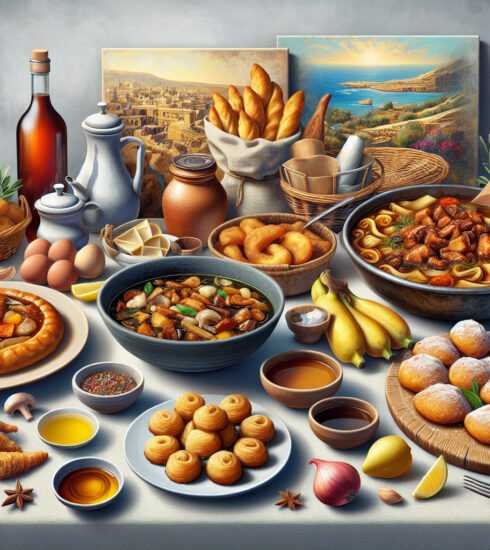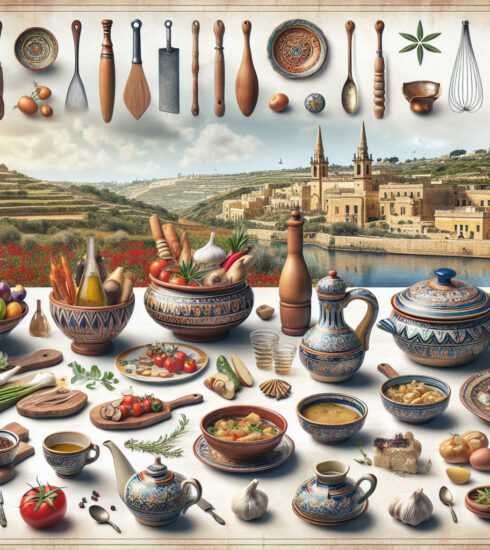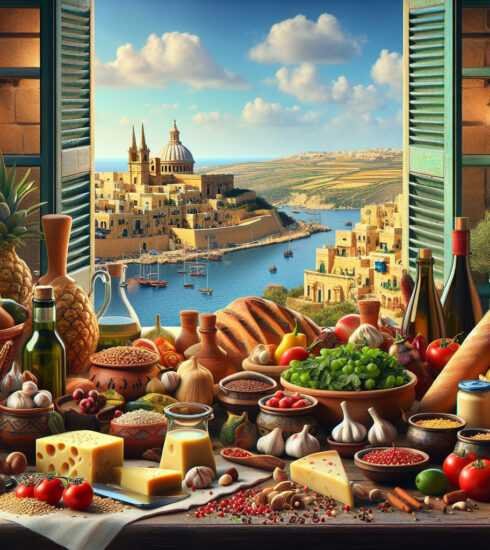Discover the Rich Flavors of Maltese Cuisine: Traditional Dishes and Top Locations
Introduction
Malta, a small Mediterranean island nation known for its picturesque landscapes and rich history, is also a destination for food enthusiasts seeking its unique culinary offerings. Maltese flavors are a delightful blend of Sicilian, North African, and Middle Eastern influences, resulting in a distinct gastronomic experience. In this article, we will delve into the traditional dishes of Malta, exploring their origins, ingredients, and how to find them. From savory pastries to hearty stews and indulgent desserts, we will take you on a mouthwatering journey through the Maltese cuisine.
The Maltese Gastronomy
Malta, with its strategic location in the heart of the Mediterranean, has been a melting pot of cultures for centuries. The gastronomy of the islands reflects this diverse history, with culinary influences from various civilizations, including the Phoenicians, Romans, Arabs, Normans, and British. The result is a unique fusion of flavors and techniques that make Maltese cuisine a true delight for food lovers.
The Mediterranean Diet
The foundation of the Maltese diet is the Mediterranean way of eating, which emphasizes fresh, locally sourced ingredients such as fish, vegetables, fruits, olive oil, and whole grains. The use of herbs and spices, such as basil, thyme, oregano, and cinnamon, is prevalent in Maltese cooking, adding depth and complexity to the dishes.
Seafood Delicacies
Being an island nation, it is no surprise that seafood features prominently in Maltese cuisine. Fresh fish, such as grouper, sea bream, and swordfish, are popular choices for grilling, baking, or stewing. Lampuki, a seasonal fish that arrives in Maltese waters in late summer, is a local favorite and is often served in a pie called “Torta tal-Lampuki”. Other seafood dishes include calamari, octopus stew, and a variety of fish soups.
Savory Pastries

Maltese pastries are a testament to the culinary skills of the locals. These delicious treats are usually filled with a variety of ingredients, including meat, cheese, vegetables, or even anchovies. The most famous Maltese savory pastry is the “Pastizzi”. These flaky pastries are filled with either ricotta cheese or a mixture of peas and curried chicken. They are a staple snack and can be found in pastizzerias all around the island.
Hearty Stews
Maltese cuisine is known for its hearty stews, which are often slow-cooked to perfection. One such dish is the “Bragioli” – thin slices of beef stuffed with a mixture of breadcrumbs, garlic, parsley, and bacon, then simmered in a rich tomato sauce. Another popular stew is “Stuffat tal-Fenek,” a rabbit stew flavored with red wine, garlic, and aromatic herbs.
Unforgettable Soups
Soup plays a significant role in Maltese cuisine, especially during the winter months. The most famous Maltese soup is “Soppa tal-Armla,” also known as Widow’s Soup. It is a hearty vegetable soup with seasonal vegetables, pasta, and a sprinkling of Parmesan cheese. Another popular soup is “Kusksu,” made with small pasta beads, broad beans, and seasonal vegetables.
The Sweet Side of Malta
No culinary journey through Malta would be complete without exploring its sweet offerings. Maltese desserts are deeply rooted in the island’s history and traditions. One such dessert is the “Helwa tat-Tork,” a sweet almond and semolina confection usually shaped into small diamonds. Another indulgent treat is “Qaghaq tal-Ghasel,” a flaky pastry filled with treacle, almonds, citrus peel, and spices.
Where to Find Traditional Maltese Dishes
Exploring traditional Maltese cuisine is an integral part of experiencing the culture of Malta. To make sure you don’t miss out on these culinary delights, here are some places where you can find traditional Maltese dishes:
Local Restaurants

One of the best ways to immerse yourself in Maltese cuisine is by visiting local restaurants. These restaurants offer a wide variety of traditional dishes, often with a modern twist. Some of the must-visit restaurants in Malta include:
- Palazzo Preca – Known for their seafood dishes and creative interpretations of Maltese cuisine.
- Ta’ Kris – Offers a traditional Maltese menu with a focus on local and seasonal ingredients.
- Ta’ Marija – Famous for its Maltese folklore evenings combined with traditional Maltese dining.
- Il-Horza – Offers a unique farm-to-table experience, showcasing the best of Maltese ingredients.
Village Feast Days
Attending a village feast day, also known as “festa,” is a fantastic way to sample authentic Maltese food. During these traditional celebrations, the local community prepares food stalls and organizes feasts where you can taste a wide variety of Maltese dishes. The most famous village feast day is the feast of Santa Marija, held on the 15th of August, when the whole island comes alive with processions, music, and, of course, amazing food.
Food Markets
Visiting a food market is an excellent way to discover fresh, local produce and traditional Maltese ingredients. The most popular food market in Malta is the “Malta Farmers’ Market” in Ta’ Qali. Here, you can find a wide variety of local fruits, vegetables, cheeses, olive oils, and traditional Maltese snacks. It’s a great opportunity to meet local farmers and artisans and learn more about the flavors of Malta.
Conclusion
Malta’s culinary scene is a true reflection of the island’s history and traditions. The unique blend of Mediterranean, North African, and Middle Eastern influences has resulted in a gastronomic experience unlike any other. From savory pastries to hearty stews and indulgent desserts, the traditional dishes of Malta offer a range of flavors and textures that will leave you craving for more. So, the next time you find yourself in Malta, make sure to indulge in the Maltese flavors and explore the vibrant culinary landscape of this beautiful island.






